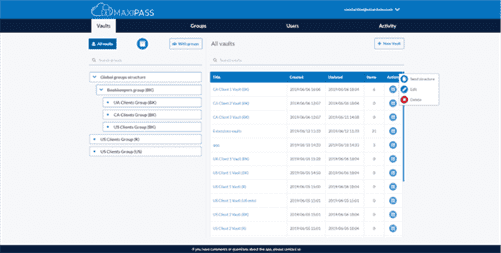This is also the phase where essential components of the system (hardware, software) and structure are considered. The framework is structured in a methodical way, and is used to offer an outline for the development and adjustment of technical and non-technical components of a high-quality system. Intellectsoft works at the cutting edge of SDLC tech and can help you implement it in your organization.

Each section can be broken down in order to further understand the usefulness behind creating this study. With its customizable spreadsheet interface and powerful collaboration features, Smartsheet allows for streamlined project and process management. Use Smartsheet’s SDLC with Gantt template to get started quickly, and help manage the planning, development, testing, and deployment stages of system development. Create a timeline with milestones and dependencies to track progress, and set up automated alerts to notify you as anything changes. Share your plan with your team and key stakeholders to provide visibility, and assign tasks to individuals to ensure nothing slips through the cracks. In order to understand the concept of system development life cycle, we must first define a system.
TMap (Test Management Approach)
Even when an enterprise utilizes the same methods, different project tools and techniques can differ dramatically. Application lifecycle management (ALM) is the creation and maintenance of software applications until they are no longer required. It involves multiple processes, tools, and people working together to manage every lifecycle aspect, such as ideation, design and development, testing, production, support, and eventual redundancy.
It ensures that the software is secure from initial design to final delivery and can withstand any potential threat. Application performance monitoring (APM) tools can be used in a development, QA, and production environment. This keeps everyone using the same toolset across the entire development lifecycle. At this stage, the goal is to deploy the software to the production environment so users can start using the product. However, many organizations choose to move the product through different deployment environments such as a testing or staging environment. Each stage in the SDLC has its own set of activities that need to be performed by the team members involved in the development project.
stages of the software development life cycle
Systems Development Life Cycle is a systematic approach which explicitly breaks down the work into phases that are required to implement either new or modified Information System. It’s easy to identify and manage risks, as requirements can change between iterations. However, repeated cycles could lead to scope change and underestimation of resources. Stackify’s APM tools are used by thousands of .NET, Java, PHP, Node.js, Python, & Ruby developers all over the world. However, regardless of the model you pick, there are a lot of tools and solutions, like Stackify’s Retrace tool, to assist you every step of the way. In other words, the team should determine the feasibility of the project and how they can implement the project successfully with the lowest risk in mind.
- Process checks include review of timelines and expenses, as well as user acceptance.
- The next phase is about to bring down all the knowledge of requirements, analysis, and design of the software project.
- The goal of TechTerms.com is to explain computer terminology in a way that is easy to understand.
- The SDLC process consists of seven phases, including planning, design, testing, and maintenance.
- It can include tasks like organizational training and change management policies that don’t fall under the software development umbrella.
- When teams have clarity into the work getting done, there’s no telling how much more they can accomplish in the same amount of time.
Next, let’s explore the different stages of the Software Development Life Cycle. This article will explain how SDLC works, dive deeper in each of the phases, and provide you with examples to get a better understanding of each phase. By making access to scientific knowledge simple and affordable, self-development becomes attainable for everyone, including you! Mostly used for creating and delivering a wide range of ideas, this model perfectly fits the clients who don’t have a clear idea or vision of what their final product should look like. The Iterative model is often favored because it is adaptable, and changes are comparatively easier to accommodate. This is particularly important for large systems, which usually are more difficult to test in the debugging stage.
A Better Way to Manage System and Software Development Life Cycles
In other words, a life cycle model maps the various activities performed on a software product from its inception to retirement. Different life cycle models may plan the necessary development activities to phases in different ways. Thus, no element which life cycle model is followed, the essential activities are contained in all life cycle models though the action may be carried out in distinct orders in different life cycle models. During any life cycle stage, more than one activity may also be carried out. Once a “go” decision is made, the team develops a project management plan that defines the scope, deliverables, and milestones for the project. A project manager should ensure that the scope meets the business needs identified during the earlier phase and that resources (both human and financial) have been identified.

However, technology has evolved, systems have become increasingly complex, and users have become accustomed to well-functioning technology. Models and frameworks have been developed to guide companies through an organized system development life cycle. Today, the traditional approaches to technology system development have been adjusted to meet https://www.globalcloudteam.com/ the ever-changing, complex needs of each unique organization and their users. Below you will find sequential steps to SDLC, but each company will vary in their process. In fact, in many cases, SDLC is considered a phased project model that defines the organizational, personnel, policy, and budgeting constraints of a large scale systems project.
Object-oriented analysis and design
One such tool is Smartsheet, a work management and automation platform that enables enterprises and teams to work better. ALM includes the entire lifecycle of the application and continues beyond SDLC. This high-risk SDLC model throws most of its resources at development and works best for small projects. It lacks the thorough requirements definition stage of the other methods. An extension of the waterfall model, this SDLC methodology tests at each stage of development.

Design documents typically include functional hierarchy diagrams, screen layouts, business rules, process diagrams, pseudo-code, and a complete data model with a data dictionary. These elements describe the system in sufficient detail that developers and engineers can develop and deliver the system with minimal additional input. Relevant questions include whether the newly implemented system meets requirements and achieves project goals, whether the system is usable, reliable/available, properly scaled and fault-tolerant. Process checks include review of timelines and expenses, as well as user acceptance.
Phase 1: The Initiation and Concept Phase
The baseline may include start date, end date, phase/stage duration, and budget data. These baseline assists the project manager in monitoring performance. The spiral model combines the iterative model’s small repeated cycles with the waterfall model’s linear sequential flow to prioritize risk analysis. You can use the spiral model to ensure software’s gradual release and improvement by building prototypes at each phase. The development team combines automation and manual testing to check the software for bugs.
The Agile model has existed for a long time, and still hasn’t lost its punch. Lately, the model is widely adopted by organisations, and it is proven to be quite the driving force behind software development. Some companies see so much value in the model that it is used for other projects, including non-technical projects and activities. If this is done in the production environment, this is usually done by a Quality Assurance professional. He or she will determine if the proposed design meets the company’s goals.
What is System Development Life Cycle (SDLC)? The theory
Other plan elements include the process of change control, risk mitigation, and communication strategies and operations. An important goal of the SDLC is to quickly and efficiently systems development life cycle definition produce high-quality software in a series of phases that are called steps. The number of steps in an SDLC will vary depending on the business and its software product goals.

Leave A Comment